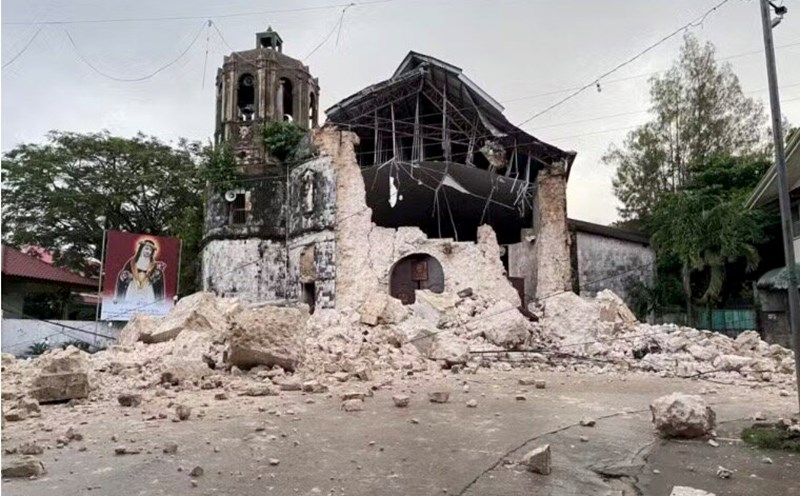The latest storm news on the morning of October 1 said that 5 houses on the narrow strip of land of Outer Banks, North Carolina, USA collapsed in the context of high waves as 2 storms were active off the East coast of the US.
In Bermuda, the government warned that the worst is yet to come. Bermuda meteorological agency director Phil Rogers said Typhoon Humberto has begun affecting the island.
Right behind Humberto is Imelda, which is forecast to affect from the evening of October 1 to the morning of October 2. According to the latest storm information, Imelda has sustained winds of 140 km/h, about 1,070 km west-southwest of Bermuda, moving east-northeast at 19 km/h.
Bermuda Secretary of State Michael Weeks stressed that during the two storms, "Imelda was our biggest concern. I cannot fully emphasize the seriousness of this threat.
According to Mr. Weeks, Bermuda will experience typhoon-level winds for 4-6 consecutive hours from the night of October 1 to the early morning of October 2.
Neither Humberto nor Imelda made landfall in the US but moved offshore. Forecasters at the US National Hurricane Center (NHC) said the center of Imelda is located east of Florida and is expected to continue moving northeast toward Bermuda.
However, the latest storms of the Atlantic hurricane season still endanger the US East Coast, causing dangerous high waves and offshore flows, forecasters in the US warn.
In Buxton, Outer Banks, five houses - all uninhabited - collapsed between 2:00 p.m. and 2:45 p.m. on September 30. No casualties were reported.
In Cuba, Prime Minister Manuel Marrero confirmed that two people have died in Santiago de Cuba due to the impact of Typhoon Imelda.
Typhoon Humberto's offshore sweep is believed to have caused Typhoon Imelda to suddenly turn east-northeast, leaving the southeastern coastal area of the United States.
Due to the too close distance, the two storms interacted with each other in the form of the Fujiwhara phenomenon - which is rare, especially in two strong storms, according to researcher Andy Hazelton of the Institute of Atmospheric and Oceanographic Research, University of Miami.
US state governments are also preparing for the storm's impact. North Carolina Governor Josh Stein declared a state of emergency before Imelda formed, while South Carolina Governor Henry McMaster said rescue teams had been deployed.
According to the latest weather forecast, both storms will cause dangerous waves along the US East Coast in the next few days.










